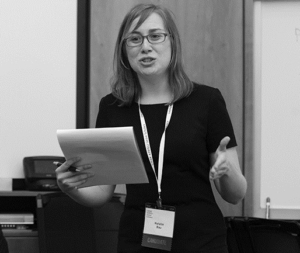Match-Specific Quality in Education

Prof. Natalie Bau
Despite dramatic expansions in access to schooling in low-income countries, learning levels remain low. For example, in rural Pakistan, 25% of primary school students don’t experience any test score gains over the course of year. This has led to substantial interest by policymakers and researchers alike in interventions such as teacher training that aim to improve school quality for all students. However, when these interventions are evaluated, many of them deliver only small or moderate effects.
Improving the instructional match between students and schools in low-income countries offers an alternative, promising avenue for increasing learning. Intuitively, instructional mismatch captures the idea that a student who needs a remedial math class is unlikely to benefit from advanced calculus, no matter how well-taught. Likewise, a student who needs an advanced calculus class is unlikely to benefit from remedial math. Thus, improving instructional match for one student may reduce the learning of another student. In low-income countries, where a single teacher often teaches an entire grade and cannot target the instructional needs of all students, mismatch may be a particularly serious problem.
Despite its intuitive appeal, relatively little is known about the quantitative importance of instructional mismatch. Moreover, little is known about how school competition affects schools’ choices of instructional level. Understanding the effects of school competition is important because private schooling and school competition are key forces in low-income countries throughout South Asia and Sub-Saharan Africa: 30% of primary school enrollment in rural Pakistan is in private schools, and the average rural village has more than 2 private schools.
A new discussion paper entitled “Estimating an Equilibrium Model of Horizontal Competition in Education” sheds light on these questions. In the paper, Professor Natalie Bau develops a new equilibrium model of school competition, where private schools select their instructional levels to maximize their profits. Estimating this model with rich data from rural Pakistan’s competitive educational markets, she quantifies the importance of instructional match. Moving a student from a school with her worst possible instructional match to one with her best possible match would improve test scores by the same amount as roughly one-year of additional schooling.
Additionally, Professor Bau finds that individuals from poorer households are substantially less responsive to a schools’ match-specific quality when they make enrollment decisions. This may be driven by the fact that poorer students have less information about school quality (their self-reported rankings of school quality are less correlated with their predicted test score gains from attending a school). As a result, profit-maximizing private schools – responding to competitive incentives — choose instructional levels that are better-suited to wealthier students because these students make enrollment decisions that are more responsive to quality. Relative to the instructional levels a social planner optimizing welfare would choose, this leads to greater inequality between wealthier and poorer students within the same private school, as well as welfare and learning losses. The entry of a new private school into the market intensifies competition for richer students, exacerbating this effect and increasing within-school inequality in the private sector.
Finally, Professor Bau uses her model to evaluate the effects of a social planner choosing the instructional level of private schools to maximize welfare. While doing so decreases inequality and leads to moderate test score gains, the gains from these policies alone are limited by the fact that less-wealthy students are not very responsive to quality. As a result, all schools must choose instructional levels that service both types of students, rather than product differentiating and allowing students to match to their best-fit schools. Much larger gains are possible when poorer students make enrollment decisions that are more responsive to quality, allowing for better instructional match.
Altogether, these findings suggest that improving instructional match can be an important tool for increasing learning in low-income countries but also highlight the challenges to improving instructional match. Increased competition can actually increase mismatch by incentivizing private schools to cater more intensively to the instructional needs of their wealthy students. Additionally, efforts that aim to increase instructional match may need to be paired with informational interventions that improve students’ ability to sort into their best-match schools.

